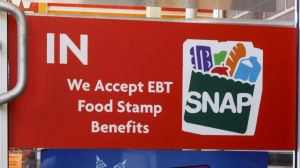Last year, the D.C. Council took a significant step by passing legislation mandating the mayor to boost SNAP benefits for nine months in the event of a budget surplus. As the District concluded the year with a surplus of $38 million, the spotlight now falls on D.C. Mayor Muriel Bowser, who is questioning the optimal use of these funds.

In response to the surplus, Mayor Bowser is contemplating alternative uses for the $38 million, questioning whether increasing SNAP benefits is the most effective approach. She raises considerations about potentially redirecting the funds to benefit a broader population, such as increasing Temporary Assistance for Needy Families (TANF) or supporting a summer benefits program in collaboration with the federal government.
However, Bowser’s reluctance to adhere to the legislation has drawn criticism from D.C. Council members, who insist that the mayor is obligated to comply with the law. NBC Washington reports their assertion that the mayor’s refusal is both unlawful and irresponsible. Moreover, SNAP advocacy groups are not taking the matter lightly, threatening legal action against the mayor. D.C. Attorney General Brian Schwalb has underscored the directive, stating that the funds must be disbursed according to the legislation and cannot be repurposed.
The dispute spilled onto the streets on New Year’s Day when protesters disrupted Bowser’s 5K event, demanding an increase in SNAP benefits in the district. Among them was D.C. resident Aparna Raj, who, though not a SNAP beneficiary herself, felt compelled to join the demonstrators due to the high cost of living in the District. The protesters chanted, “Don’t steal SNAP,” emphasizing the urgency of addressing food insecurity.
Approximately 140,000 D.C. residents rely on SNAP benefits, and the stakes are high as families experienced a reduction in benefits last March when federal pandemic funding concluded. The situation is further exacerbated by the national trend of rising food insecurity, as highlighted in a new report from the U.S. Department of Agriculture. The report reveals a surge in households struggling to secure enough food, with 44.2 million people facing difficulties in 2022, up from 33.8 million the previous year.
Feeding America’s Chief Executive, Claire Babineaux-Fontenot, notes that over half of food-insecure households participate in major federal food assistance programs, while others turn to the nation’s network of food banks for support. As the debate unfolds in D.C., the broader context of increasing food insecurity across the U.S. adds urgency to the need for decisive and compassionate action.
Read Also – OAS Secrets: The Greatest Methods for Increasing OAS to the Maximum




